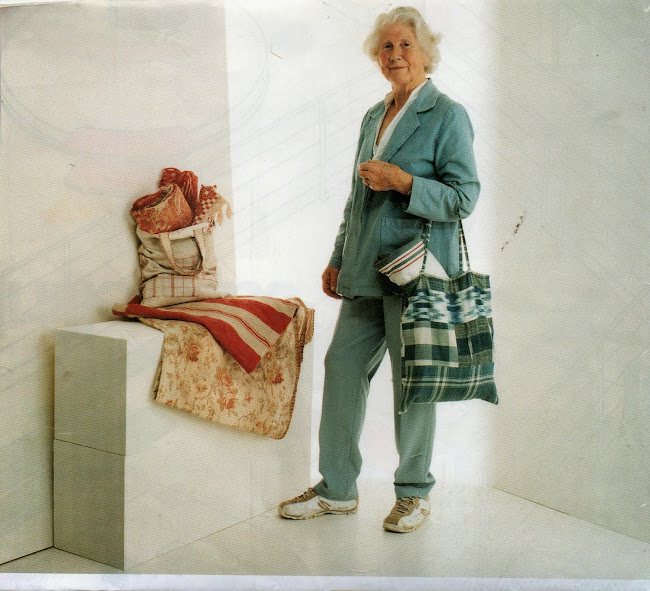Pique and handmade red/white trim
I am aware that in the US 'pillows' are referred to as what we call cushions. Continental pillows are square, so English rectangular cases are not much use. French cases are usually made to take a 24" square filling and are buttoned one end, with small m.o.p. buttons but I have some that are 28" square, quite large. The best have those linen-covered buttons, designed to go through a mangle or for pressing with a heavy iron. It's worth looking at the details of a second-hand pillow case, however prettily embroidered and starched - hold it up to the light and you may find the weak lines where it has been folded and pressed many times and is wearing thin. Torn and damaged lace and initials are not worth restoring. Sometimes you can rescue a fine monogram from a corner and apply it to something else. Check any embroidery, as you may not want to rest your cheek on a well embroidered rose or highly elaborate initial in raised satin stitch, ( it could work like an unwanted stencil!)and any hemstitching in drawn thread work can be risky if old and used, - if it is beginning to fray and some of the 'jours', the openwork slots, ditto the corners, are faulty, its life is quite limited. Linen is always the best, but quite difficult to find in first class condition and expensive, so cotton is sometimes the better buy for everyday use. Some of the old vintage pillowcases have the most exquisite and fine embroidery on them - initials, crests, trails of finely worked flowers and then openwork borders and lace trims - a sight to behold - but they are best used, as many Americans do - as pillow shams and not slept on. It is a sad fact that the grease from peoples' heads and hair does cause problems, and shortens the life of these exquisite creations.
I often make pretty little 'bed' cushions in fine materials: I have used blue bordered damask linen tea napkins with fringes for one lot, white vintage pique (a sort of embossed heavy white cotton), backed by fine white striped damask sheeting for another lot, parts of a torn Marcella white bedspread with tassels for some others and added red and white hand -made frilly cotton lace trimmings to others where Toile de Jouy has been used for the bed curtains. All have pure down fillings and have zips hidden under the trims for easy removal and washing. They make nice presents. You can get pure down out of good old (clean) eiderdowns, but do the filling in a dust bin in your garage or you will resemble a snow goose when you emerge from the job.













